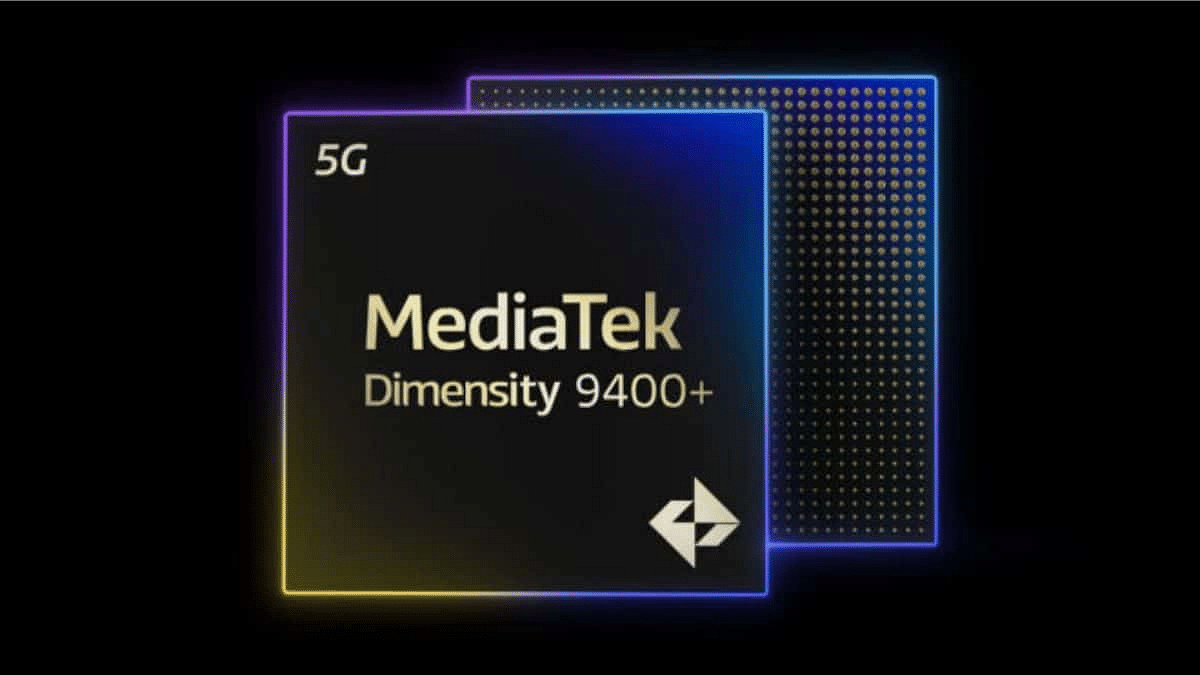Key Highlights
- Dimensity 9400+ has a faster 3.73GHz core
- AI performance boosted by 20%
- Bluetooth range extended to 10km
MediaTek has officially unveiled the Dimensity 9400+, its most advanced flagship mobile chip for Android smartphones. Aimed at premium devices, this new SoC builds on the success of last year’s Dimensity 9400 but brings noticeable upgrades, especially in AI performance, processing speed, and wireless connectivity. Here’s everything you need to know about the latest Dimensity 9400+ processor.
Also Read | MediaTek Dimensity 8200 Chipset Vs Qualcomm Snapdragon 778G Chipset Comparison: Which Performs Better?
MediaTek Dimensity 9400+ Features
Performance Boost With All Big Core Design
The Dimensity 9400+ continues the “All Big Core” approach. It features a powerful Arm Cortex-X925 core clocked at 3.73GHz. This offers better performance than the 3.63GHz Cortex-X4 core on its predecessor. It’s backed by three Cortex-X4 and four Cortex-A720 cores, ideal for multitasking, gaming, and high-performance tasks.
Enhanced AI With MediaTek NPU 890
The chip includes the upgraded MediaTek NPU 890, which delivers up to 20 percent faster agentic AI performance thanks to Speculative Decoding+ (SpD+). This upgrade is designed to offer smoother, smarter interactions with AI features in supported apps.
Powerful GPU For Gaming And Graphics
MediaTek has retained the 12-core Arm Immortalis-G925 MC12 GPU, providing premium-level graphics rendering. Gamers and creators can expect a fluid and responsive experience, especially in graphically demanding applications.
Camera And Media Capabilities
The Imagiq 1090 ISP enables support for up to a 320MP rear camera, ensuring flagship photography performance. Users can also benefit from advanced photo and video features that rival the best in the industry.
Next-Level Connectivity
The chip supports Wi-Fi 7, 5G (Sub-6), Bluetooth 6.0, and GNSS, with a significant Bluetooth range boost to 10km—up from 1.5km in the Dimensity 9400. This opens the door for broader Bluetooth-based communication between smartphones.
Also Read | Qualcomm Snapdragon 7 Plus Gen 3 Vs MediaTek Dimensity 7200 Chipset: Quick Comparison
Availability And First Devices
The Oppo Find X8s and Find X8s+ are the first smartphones to feature the Dimensity 9400+ and are already launched in China. They are expected to go on sale this month. Brands like Vivo and Realme are also lining up with new smartphones, Vivo X200s and Realme GT7, powered by this chipset.
For the tech geeks, stay updated with the latest cutting-edge gadgets in the market, exclusive tech updates, gadget reviews, and more right on your phone’s screen. Join Giznext’s WhatsApp channel and receive the industry-first tech updates.

